If you've been to the Belize Zoo, you have surely seen Lucky the Black Jaguar. Visitors marvel at his glistening coat and massive yet graceful structure. He was rescued from a resort in the South in 2012 where he was an exotic display to entertain guests. But he was neglected and Zoo keepers found him starved, and close to death. Since then the Zoo staff has been trying to rehabilitate him. But his chronic digestive problems among a string of health complications took him over and he died yesterday.
The Belize Zoo announced his passing today, noting that staff attended to him for over two weeks, providing care and constant medical attention. But nothing could halt his decline and the 20 year old Lucky Boy passed away.
Indeed, caring for the rare and exotic cat was an ongoing struggle and in January of 2015, I was there when specialized vets performed a procedure on him - and it gave a rare chance to observe his majestic power at rest. In memory of Lucky, we repeat that story tonight:...
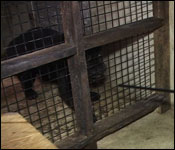
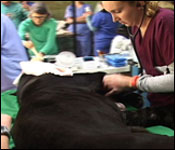
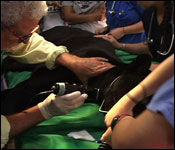
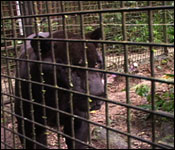
About 18 vets from Cornell University have been stationed at the Belize Zoo since Saturday. They are here to do a check-up on Lucky Boy- the Black
Jaguar. Lucky Boy earned that name after he was found abandoned and in dire condition at an abandoned resort in Southern Belize. Basically, he's lucky
to be alive!
He was rescued and taken in by the Belize Zoo in 2012 and since then he has become a part of the zoo family.
Although his health has improved substantially, he's a special case, so he needs regular checkups. But Lucky Boy's lucky streak continues: he's getting
medical care from one of the finest veterinary schools in the US.
Today Courtney Weatherburne was there to see how they did it:…
Usually this 160 pound black jaguar would be alert, prowling around in his cage and they're no way I could be standing next to him. But today he lyes here
anaesthetise because these doctors are conducting a health assessment on lucky boy.
And it was quite a struggle to get him in this state. At 9:40, 8 doctors arrived at the management area where Lucky Boy was being held. He paced around
like this for a few minutes - And then got very aggressive when the caretaker tried to administer the shots. It took one dart to the right hind leg and one
to the neck to sedate him. He was out after about 15 minutes. That was followed by a careful examination from the team. And then, Lucky Boy was carted away
to the operating table where they performed a series of tests.
 Dr. George Kollias - Professor, Zoological Medicine
Dr. George Kollias - Professor, Zoological Medicine
"First of all we do a complete physical exam to look at his general body condition, see if we find any problems. We knew previously that he has a
number of different dental problems which was probably the result of poor conditions he was held in before he came to the zoo. So now we have to do
everything we can to correct these problems. his body condition is very good. He has a pretty rocky start, took a long while to build him up
nutritionally but now he's pretty robust and gained a little bit more weight; Generally he is doing great."
 Dr. Jordyn Boesch - Faculty Anaesthesiologist, Cornel University
Dr. Jordyn Boesch - Faculty Anaesthesiologist, Cornel University
"So he is doing fairly well under anaesthesia. He's been a bit difficult to regulate. His anaesthetic depth lightens then deepens then lightens and
deepens, so he's been a little bit of a roller coaster ride but over all, he is doing just fine."
While, generally, he was in good health, his teeth needed serious attention.
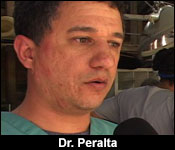 Dr. Peralta - Chief of Dentistry
Dr. Peralta - Chief of Dentistry
"Right now we are extracting a mandibular canine tooth which was damaged a while ago. Has received a root canal treatment in the past, approximately 2
years ago. We took some follow up today and did a thorough clinical examination and determined that at this stage the tooth is beyond repair. We can no
longer keep it in the mouth, so probably extraction is going to provide relief. It is a somewhat evasive procedure, long as you can see, intensive but
we hope it can provide long term relief."
Lucky Boy isn't the only one benefiting from this assessment - Belizean animal health professionals sat in on the procedure:
 Jane Crawford - Veterinary Surgeon, Animal Medical Center
Jane Crawford - Veterinary Surgeon, Animal Medical Center
"I have done similar procedures but on dogs, not jaguars and I think it's a bit more complicated. Just the size of the tooth makes it harder to remove.
But I think it's very interesting and I'm learning and there are things that I could layer on and apply to my own canine and feline patients."
So when the procedure is over this loved and prized creature will be taken back to his cage. Where he and one of his best friends Tim and hang out
 Tim Sho - Zoo Keeper
Tim Sho - Zoo Keeper
"Started with lucky boy when he got here because he was in bad health. We had to hand feed him personally. I would give him food out of the hand and
that's what we do here. We just don't toss animals food, we normally hand feed so that they can find out we are not type of person that would harm
them, we're the ones that care for them and lucky boy has learned that. As soon as he hear us bringing down the slide door he's going to jump out and
ready for his treat. As 4:30, 5 o'clock hits, he already knows that food is about to be served and he's readily coming over. Sometimes his interest
goes by the other 2 jaguars but as soon as we call him and he hear the slide door he's ready to come for food."
The doctors will be monitoring Lucky Boy until they leave on Sunday.
Lucky boy was the only Black Jaguar at the Belize Zoo, and that particular genetic strain of the cat is not known to be indigenous to Belize.



